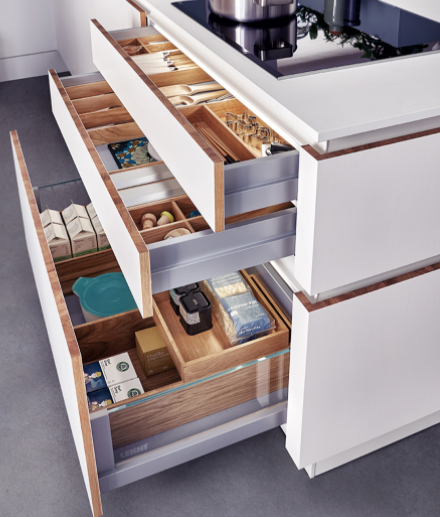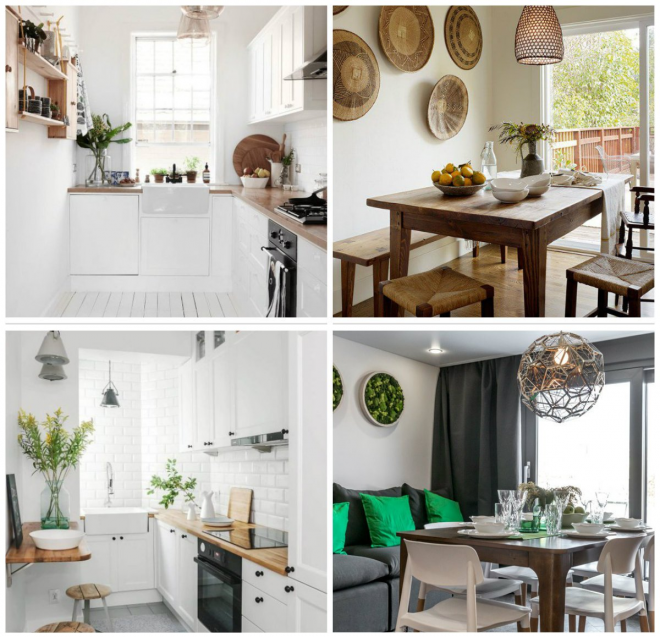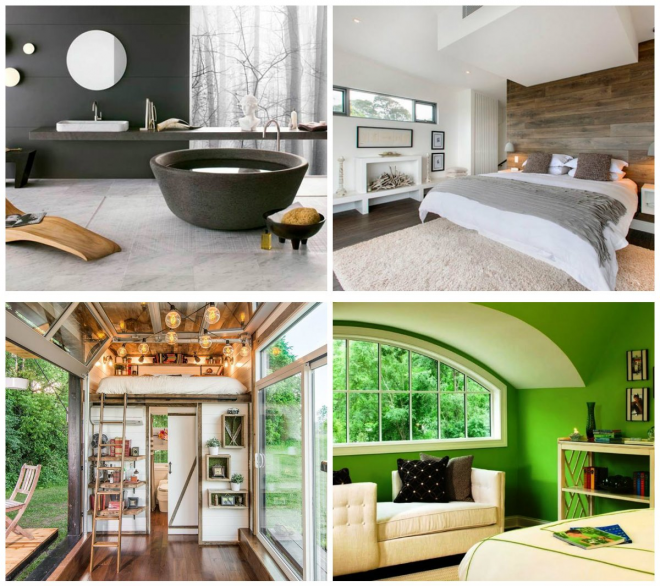 huge effect on how (and for how long) you use your kitchen. As a result, it's important to conduct research prior to purchasing cabinetry.
huge effect on how (and for how long) you use your kitchen. As a result, it's important to conduct research prior to purchasing cabinetry.We'll take a closer look at these materials to see if they're a good fit for your kitchen:
Medium Density Fiberboard
MDF is a thick, solid composite made from reclaimed wood filaments, wax, and a resin binder. It's CNC-processed under high pressure and commonly used as cut-outs for single-piece kitchen frames. It is much denser and heavier than particle board, making it an excellent option for kitchen cabinets. But it's the simplicity of MDF that sets it apart. MDF is free of knots and rings, making it more uniform in cutting and use than natural woods. The typical MDF surface is rough, flat, and smooth, making it suitable for veneering, painting, and just about every other treatment. It's also a gluable, dowelable, and laminateable material. MDF is therefore less costly than most natural forests, which is a plus. Then what's the only flaw? If not sealed, MDF has a tendency to warp.
Compressed wood
Many cabinet makers tend to use pressed materials (such as plywood) when creating their cabinets. And it's not without excuse. It's a moderately low-cost material that has better damp resistance and is generally more stable than MDF. It's a sheet material made from glued together thin layers or "plies" of wood veneer with neighboring layers' wood grain rotated up to 90 degrees from one another. It's a common choice in many Scandinavian kitchens and can be used in a variety of settings.
Chipboard
Cabinets made of chipboard or particleboard are perhaps the least conventional cabinet construction type. Chipboard is a composite consisting of wood chips and flakes, sawdust, and wood fibers, all of which are glued together with an adhesive under heat and pressure. Since it's actually scraps of wood ground into small parts with glue keeping it all together, this mixture isn't as powerful as the others. When cost is more critical than strength and appearance, chipboard is typically the best choice. However, the low price comes at a cost. Particleboard has the downside of being vulnerable to moisture-induced expansion and discoloration, particularly if it is not sealed with paint or another sealant.
Stainless Steel
Stainless steel gives a kitchen a modern feel, and it's not the same thing as wood. Stainless steel was first used in commercial kitchens, but it has since made its way into many home kitchens. It's easy to understand why. Since stainless steel does not expand and contract like wood, it is a great choice for damp areas (like kitchens). Stainless steel is also corrosion-resistant, robust, and simple to clean. All of this comes at an expense, as stainless steel cabinet frames and doors are significantly more expensive than other manufactured woods.
It takes a lot of research to find the perfect cabinet materials for your kitchen project. Since cupboards take up such a big area of the room, it’s important to know the difference between the choices out there.


